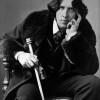Old Bailey
The Central Criminal Court of England and Wales is a criminal court building in London that was built in 1902 and designed by Edward William Mountford. The building gets the nickname "Old Bailey" from the street it sits on, which followed the same path as the ancient wall that was around London and part of the fortification's bailey. It is well-known from the 1859 Charles Dickens novel A Tale of Two Cities. In the novel, Dickens portrays Old Bailey as a fearful place that embodies the uncompromising harshness of the law. This is also where Oscar Wilde was found guilty for "gross indecency" and sentenced to two years in prison.
Parent Map
Coordinates
Latitude: 51.515509300000
Longitude: -0.102021900000
Longitude: -0.102021900000


